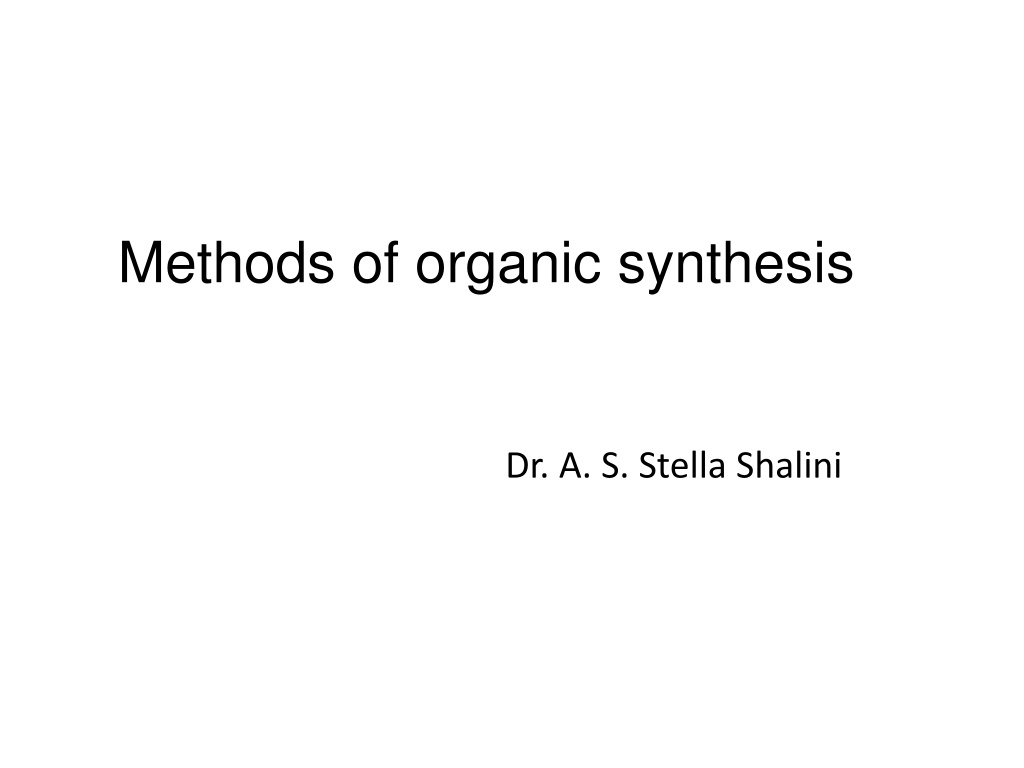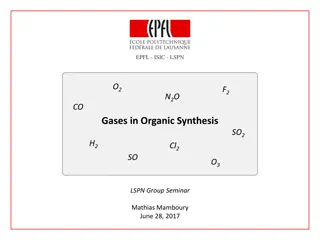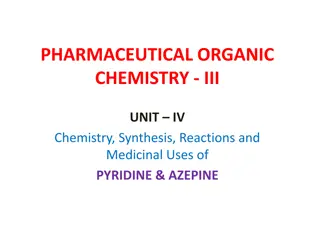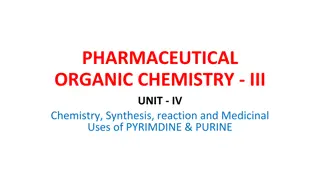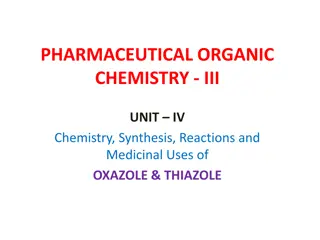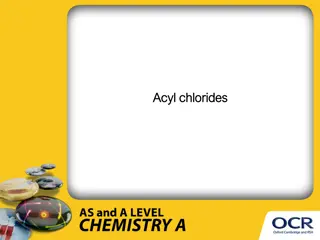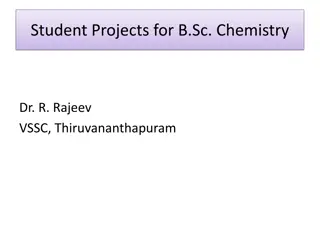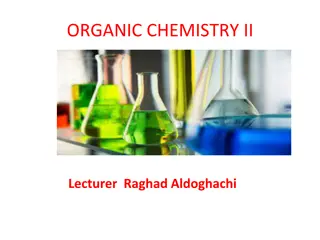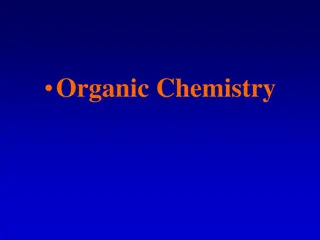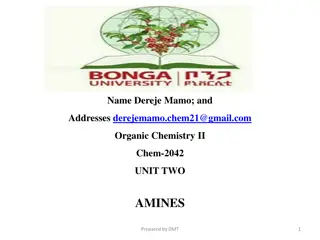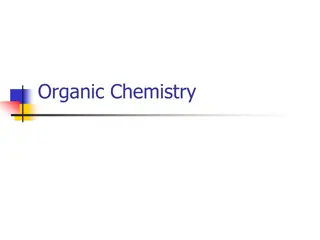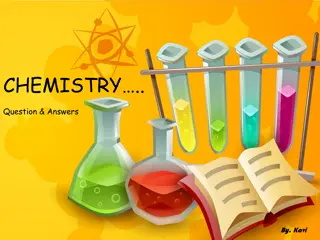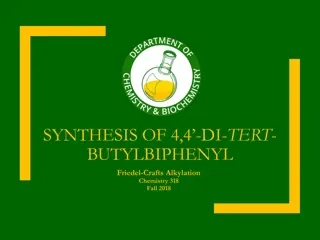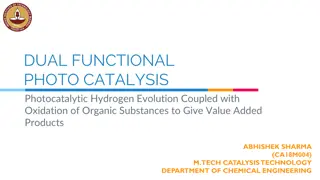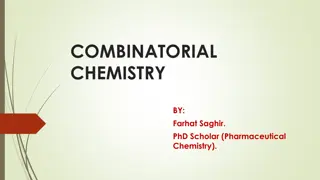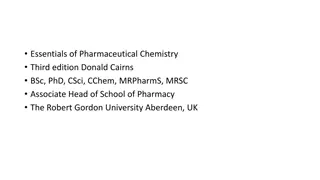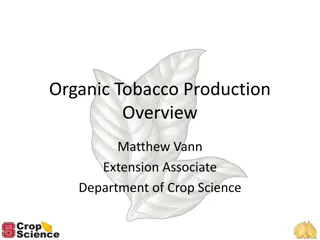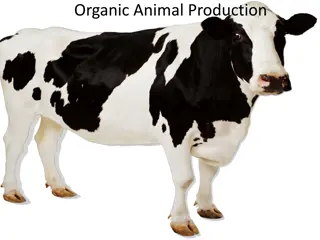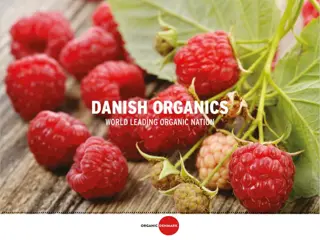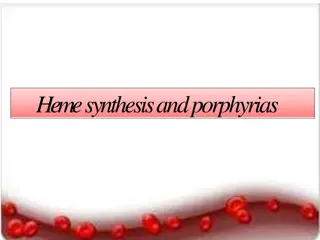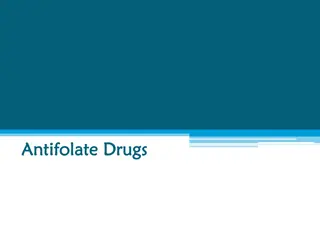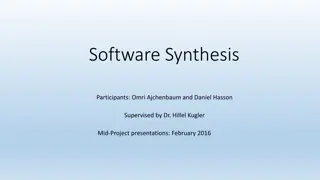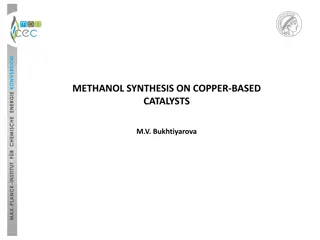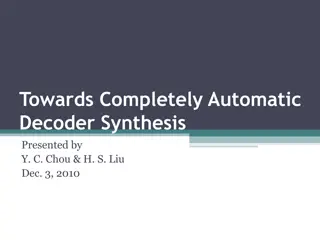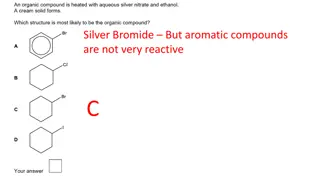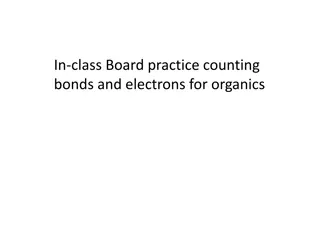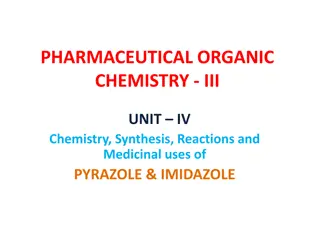Evolution of Organic Synthesis in Chemistry
Explore the history and significance of organic synthesis through key figures like Dr. A. S. Stella Shalini, Hermann Emil Fischer, Sir Robert Robinson, and Robert Burns Woodward. Discover how complex organic molecules like D-glucose, tropinone, quinine, Vitamin B12, and strychnine were synthesized, shaping modern organic chemistry practices.
Uploaded on Oct 07, 2024 | 0 Views
Download Presentation

Please find below an Image/Link to download the presentation.
The content on the website is provided AS IS for your information and personal use only. It may not be sold, licensed, or shared on other websites without obtaining consent from the author. Download presentation by click this link. If you encounter any issues during the download, it is possible that the publisher has removed the file from their server.
E N D
Presentation Transcript
Methods of organic synthesis Dr. A. S. Stella Shalini
Many of the materials we use today are made by chemical synthesis.Most of the new compounds made today are organic.
Most of the new compounds made today are organic, that is, they are composed largely of carbon. C C H C C H C C O C N N N O O C C Cl C C C C C stable and versatile unstable
Product Product e.g. paint and pigment vitamin e.g. paint and pigment vitamin synthetic fiber pesticide plastic synthetic fiber pesticide plastic explosive pharmaceutical explosive pharmaceutical
MAKING COMPLEX MOLECULES Fischer achieved the first synthesis of the first truly complicated organic molecules, the sugar molecule D-glucose in 1890. H O C H C OH HO C H H C OH Hermann Emil Fischer Germany (1852-1919) H C OH CH2OH D-Glucsoe The Nobel Prize in Chemistry 1902 Fischer s work on the total synthesis of D-glucose is regarded as the catalyst for the development of synthetic organic chemistry in the 20th century.
O I Br Br NMe2 Br Br NMe2 Br NMe NMe2 NMe Br Br ( II ) Br OH H O NMe NMe NMe H OH Willstatter s synthesis of tropine Sir Robert Robinson United Kingdom (1886-1975) COOH COOH CHO O + H2NMe + O O NMe NMe The Nobel Prize in Chemistry 1947 CHO COOH COOH Robinson s synthesis of tropinone in 1917 The Robinson s synthesis of tropinone was hailed as revolutionary. This was to look at the target molecule and try to imagine how the molecule could be constructed from simpler chemical units.
Some of the Complex Molecules Made by Woodward There is excitement, adventure, and challenge, and there can be great art in organic synthesis. - Woodward Quinine (1944) anti-malarial drug Vitamin B12 (1973) Strychnine (1954) pesticide
Prostaglandins Corey, Elias James 1928 , American organic chemist and educator, b. Methuen, Mass., grad. Massachusetts Institute of Technology (B.S. 1948, Ph.D. 1951). In 1990, he was awarded the Nobel Prize in Chemistry. Some prostaglandins affect human blood pressure at concentrations as low as 0.1 microgram per kilogram of body weight. Substances that inhibit prostaglandin synthesis may be useful in controlling pain, asthma attacks, and anaphylactic shock and in reducing the clotting ability of blood.
Organic Synthesis: Intentional construction of molecules by means of chemical reactions. 1. 2. Carbon-Carbon Bond Formation Functional Group Interconversion Efficiency and selectivity are important characteristics that have to be taken into account. [Efficiency: yields, number of steps] [Selectivity: chemoselectivity, regioselectivity, stereoselectivity]
The importance of synthesis Prove structure of synthesized product Gain insights to reactivity based on structure Test synthetic methodology development of new synthetic methodology Apply or test a biological utility or theory Gain knowledge of the molecular architecture of product for drug testing
Functional Groups A functional group is an atom or a group of atoms with characteristic chemical and physical properties. An atom or group of atoms that influences the way the molecule functions, reacts or behaves. It is the reactive part of the molecule. Most organic compounds have C C and C H bonds. However, many organic molecules possess other structural features: Heteroatoms atoms other than carbon or hydrogen. Bonds the most common bonds occur in C C and C O double bonds. These structural features distinguish one organic molecule from another. They determine a molecule s geometry, physical properties, and reactivity, and comprise what is called a functional group. 12
Heteroatoms and bonds confer reactivity on a particular molecule. Heteroatoms have lone pairs and create electron-deficient sites on carbon. Bonds are easily broken in chemical reactions. A bond makes a molecule a base and a nucleophile. 13
Hydrocarbons are compounds made up of only the elements carbon and hydrogen. They may be aliphatic or aromatic. 15
Compounds Containing the C=O Group: This group is called a carbonyl group . The polar C O bond makes the carbonyl carbon an electrophile, while the lone pairs on O allow it to react as a nucleophile and base. The carbonyl group also contains a bond that is more easily broken than a C O bond. 18
